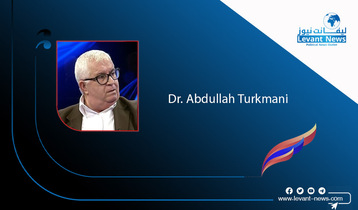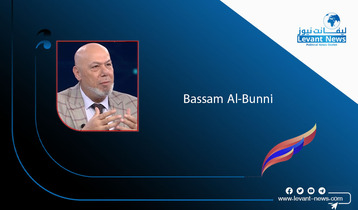-
The Future of Russia’s Arms Industry

There have been an estimated 15,000 Russian soldiers killed in the last two months of fighting in Ukraine. The hyper-connected nature of the conflict has meant that videos of anti-tank missiles finding their target and the smouldering wrecks of Russian armour have been viewed far and wide. Whilst the conflict is arguably still in its early stages there can be little doubt that the initial phases were a disaster for the Russian military. A geostrategic question that follows is whether the Russians will be able to keep their position as the second largest exporter of arms in the world following this debacle?
Prior to the Ukraine invasion Russia had a defence budget of over $250bn – three times that of Britain or France. Russia embarked on improving its military strength after the fall of the Soviet Union and invested heavily in military defense. The top manufacturing companies in Russia are Almaz-Antey, United Aircraft, and Tactical Missiles Corporation. The industry employs 20% of the manufacturing sector’s workforce.
Russia’s key intervention in Syria was not just important for Moscow’s support to the Assad Regime but was also an exhibition space or showroom for Russian arms. The Kommersant daily quoted Kremlin insiders and military analysts, that the “marketing effect” of the Syrian conflict will boost Russia’s arms sales by up to $7bn.
The position of the world’s second biggest arms exporter gives Russia vast strategic influence. Looking at various votes condemning the Ukraine invasion it is notable how many of the abstention countries were ones that rely on operating Russian weapons. The dynamics of the India-Pakistan relationship are highly dependent on these weapons and likewise the complex response from Turkey, a NATO member which has been acquiring Russian weapon systems over previous years.
Both the failure of Russian weaponry in Ukraine combined with the most far-reaching sanctions of the modern age will make many of the states who have previously purchased from Russia think twice. Already there is speculation that Western sanctions on Russia and Belarus could push countries like Nigeria to import more accessible and affordable Chinese armaments. The inability of Russian armour to take cities intact and the inability of Russian airpower and anti-air missiles to take control of the Ukrainian airspace are high profile issues that those selling Russian arms will struggle to speak to.
Observers speculate that the issue is not with the Russian equipment alone but also speaks to wider corruption within the Russian military and the huge levels of secrecy and levels of control that are tied to President Putin personally, which meant that many soldiers genuinely thought they were on a training mission until the moment of the invasion. Low morale, poor logistics, poor leadership and poor equipment have dogged the Russian operation to date.
In early April, the failures to date led Putin to name Army Gen. Alexander Dvornikov, commander of Russia’s Southern Military District, as commander of Russia’s military campaign in Ukraine. Unifying the operation rather than attempting complicated advances across different geographic axis and focusing solely (for now) on the eastern parts of Ukraine may result in a different narrative in future but it is impossible to know.
Military historians point to the fact that when the Soviet Red Army pushed west to capture Berlin, they did so with some three million soldiers. The miniscule number of troops they have in comparison in Ukraine changes the nature and intent of the fighting especially in built up urban areas where the Russians have been unable to operate effective fronts of attack. The failures of the Ukraine invasion, the impact of sanctions and the options of cheaper weapons from China as also exacerbated by a brain drain from Russia itself as many of the country's best and brightest leave. According to one estimate by a Russian economist, as many as 200,000 Russians have left their country since the start of the war. That number may increase rapidly if Putin decides to announce that the ‘special operation’ is in fact a war and that conscription will be used to fuel it.
Arms exports are the central plank of Russia’s manufacturing economy and the fact that they are imperilled by the folly of the Ukraine invasion is a reminder of how bad its consequences could be for Russia in the medium term.

BY: James Denselow
You May Also Like
Popular Posts
Caricature
BENEFIT AGM approves 10%...
- March 27, 2025
BENEFIT, the Kingdom’s innovator and leading company in Fintech and electronic financial transactions service, held its Annual General Meeting (AGM) at the company’s headquarters in the Seef District.
During the meeting, shareholders approved all items listed on the agenda, including the ratification of the minutes of the previous AGM held on 26 March 2024. The session reviewed and approved the Board’s Annual Report on the company’s activities and financial performance for the fiscal year ended 31 December 2024, and the shareholders expressed their satisfaction with the company’s operational and financial results during the reporting period.
The meeting also reviewed the Independent External Auditor’s Report on the company’s consolidated financial statements for the year ended 31 December 2024. Subsequently, the shareholders approved the audited financial statements for the fiscal year. Based on the Board’s recommendation, the shareholders approved the distribution of a cash dividend equivalent to 10% of the paid-up share capital.
Furthermore, the shareholders endorsed the allocation of a total amount of BD 172,500 as remuneration to the members of the Board for the year ended 31 December 2024, subject to prior clearance by related authorities.
The extension of the current composition of the Board was approved, which includes ten members and one CBB observer, for a further six-month term, expiring in September 2025, pending no objection from the CBB.
The meeting reviewed and approved the Corporate Governance Report for 2024, which affirmed the company’s full compliance with the corporate governance directives issued by the CBB and other applicable regulatory frameworks. The AGM absolved the Board Members of liability for any of their actions during the year ending on 31st December 2024, in accordance with the Commercial Companies Law.
In alignment with regulatory requirements, the session approved the reappointment of Ernst & Young (EY) as the company’s External Auditors for the fiscal year 2025, covering both the parent company and its subsidiaries—Sinnad and Bahrain FinTech Bay. The Board was authorised to determine the external auditors’ professional fees, subject to approval from the CBB, and the meeting concluded with a discussion of any additional issues as per Article (207) of the Commercial Companies Law.
Speaking on the company’s performance, Mr. Mohamed Al Bastaki, Chairman BENEFIT , stated: “In terms of the financial results for 2024, I am pleased to say that the year gone by has also been proved to be a success in delivering tangible results. Growth rate for 2024 was 19 per cent. Revenue for the year was BD 17 M (US$ 45.3 Million) and net profit was 2 Million ($ 5.3 Million).
Mr. Al Bastaki also announced that the Board had formally adopted a new three-year strategic roadmap to commence in 2025. The strategy encompasses a phased international expansion, optimisation of internal operations, enhanced revenue diversification, long-term sustainability initiatives, and the advancement of innovation and digital transformation initiatives across all service lines.
“I extend my sincere appreciation to the CBB for its continued support of BENEFIT and its pivotal role in fostering a stable and progressive regulatory environment for the Kingdom’s banking and financial sector—an environment that has significantly reinforced Bahrain’s standing as a leading financial hub in the region,” said Mr. Al Bastaki. “I would also like to thank our partner banks and valued customers for their trust, and our shareholders for their ongoing encouragement. The achievements of 2024 set a strong precedent, and I am confident they will serve as a foundation for yet another successful and impactful year ahead.”
Chief Executive of BENEFIT; Mr. Abdulwahed AlJanahi commented, “The year 2024 represented another pivotal chapter in BENEFIT ’s evolution. We achieved substantial progress in advancing our digital strategy across multiple sectors, while reinforcing our long-term commitment to the development of Bahrain’s financial services and payments landscape. Throughout the year, we remained firmly aligned with our objective of delivering measurable value to our shareholders, strategic partners, and customers. At the same time, we continued to play an active role in enabling Bahrain’s digital economy by introducing innovative solutions and service enhancements that directly address market needs and future opportunities.”
Mr. AlJanahi affirmed that BENEFIT has successfully developed a robust and well-integrated payment network that connects individuals and businesses across Bahrain, accelerating the adoption of emerging technologies in the banking and financial services sector and reinforcing Bahrain’s position as a growing fintech hub, and added, “Our achievements of the past year reflect a long-term vision to establish a resilient electronic payment infrastructure that supports the Kingdom’s digital economy. Key developments in 2024 included the implementation of central authentication for open banking via BENEFIT Pay”
Mr. AlJanahi concluded by thanking the Board for its strategic direction, the company’s staff for their continued dedication, and the Central Bank of Bahrain, member banks, and shareholders for their valuable partnership and confidence in the company’s long-term vision.
opinion
Report
ads
Newsletter
Subscribe to our mailing list to get the new updates!




















